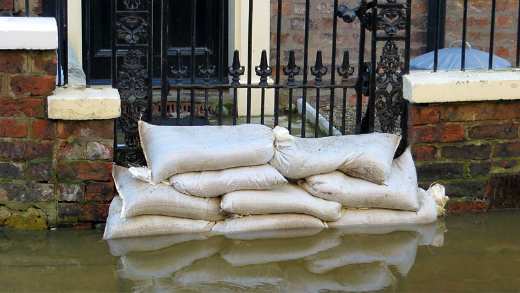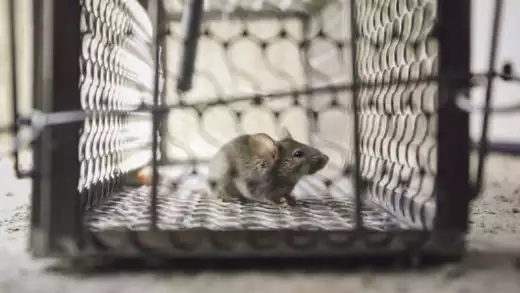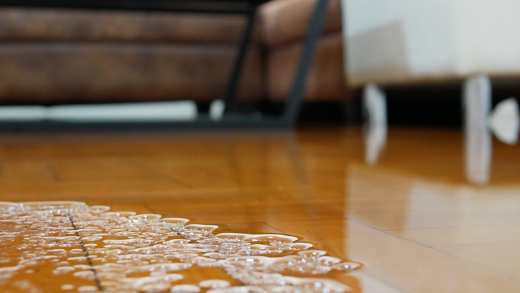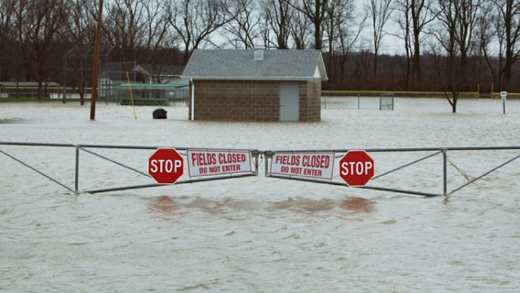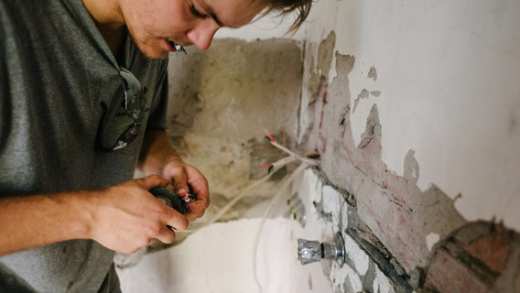When water freezes in pipes, it expands – and it doesn't take long to build up enough pressure to rupture them. Not only could this leave you with no hot water, but there's also the nightmare clean-up operation and costly repairs.
Read on to find out how you can prepare your pipes for plunging temperatures and things you can do if you're too late.
This general information may not cover every risk or hazard and is no replacement for professional advice. If in doubt, you should always speak to a reputable plumber who can give you the expert help needed for your circumstances.
Prepare your pipes for winter
Before the temperature dips below zero, there are steps you can take to prepare your pipes and potentially help stop them from freezing or bursting.
Insulate
Cover all visible pipes with specialist insulation, called lagging, which you can usually buy from your local DIY store. Particularly focus on exposed pipes in small spaces such as the attic. You can use gaffer tape to securely fix the insulation around bends and tricky-to-reach pipes.
You can also insulate your cold-water tank, which is normally found in the loft, with an insulating jacket.
Let the warm air flow
Keep your home warm throughout the day by setting your heating to come on for an hour or two when you're out. You should also keep cold air out by closing your windows and using door seals or draught excluders.
If your pipes and tanks are in unheated loft spaces or forgotten cupboards, open the hatch or door occasionally to allow warm air to circulate around them.
Repair dripping taps
Leaky taps can block your pipe and cause damage if they freeze. Test each of your taps by turning them fully off. If any continue to drip, get them fixed.
Turn off water when travelling
If you're heading to your relatives over the holidays or jetting off for some winter sun, you could turn your water off and drain the system to potentially prevent any damage while you're away. You can do this by using your home's stopcock.
The stopcock is usually located under the sink – however, it's important you know where yours is, as you'll need it in an emergency.
How to deal with frozen and burst pipes
Here are some steps you can take if you suspect you have a frozen or burst pipe. If one or more of your taps aren't working, it’s a good idea to check with your neighbours that they have water first, just in case it’s a wider problem with the water supply.
This general guidance on tackling frozen and burst pipes could change or not be right for your circumstances, and we can’t be held responsible for any possible outcome from following it. If you do decide to tackle a frozen or burst pipe by yourself, it could lead to further damage that might not be covered by your home insurance.
Frozen pipes
Turn off the water supply
Switch off the main water supply first using your stopcock and open all the cold taps to help relieve the pressure on the frozen pipe.
Locate the freeze
Check the obvious places, like pipes outside or in unheated areas of your home.
You could also try locating the frozen pipe by checking the flow of water from things like taps and toilets throughout your home. If the pipes in one room or area of the house aren’t working, that could indicate where the freeze is.
It isn’t always easy to identify when a pipe is actually frozen. And in many cases, it’s a good idea to call your home insurer or a reputable plumber for help.
Let the thaw commence
If you do find the frozen pipe, you can try gently thawing the affected area using a hairdryer on its lowest setting, a hot water bottle, or warm towels. Never use a blowtorch or heat gun, as this can damage the pipe.
A burst pipe
Turn off the water supply
Switch off the main water supply using the stopcock. You may also need to turn off the cold-water tank. Doing this should help reduce the amount of flooding the burst pipe causes in your home.
Drain the system
Turn on all your cold taps and leave them open to allow the water in the system to completely drain away. Once the water has finished draining, turn them off again. Similarly, you should flush all your toilets to help drain the water.
Make sure your electrics are safe
If there’s a chance any of your electrics have gotten wet, turn off the power at the mains and call in a qualified electrician for help.
Soak up any water
If the leak is small, you can clean it up using towels. Use buckets if it's coming through the ceiling, and if your ceiling starts to bulge, the structural integrity may be at risk and you'll need to call a professional to check the damage.
Call your insurer
Call your insurer as soon as you can to make a claim and get advice on what to do next. You should take photos of any damage to your home or belongings.
How we can help
If you've got home insurance with us, we're here to help with frozen pipes or dealing with the fallout after one bursts. We'll soon have someone knocking on your door to put things right so you can enjoy a hot bath again.

